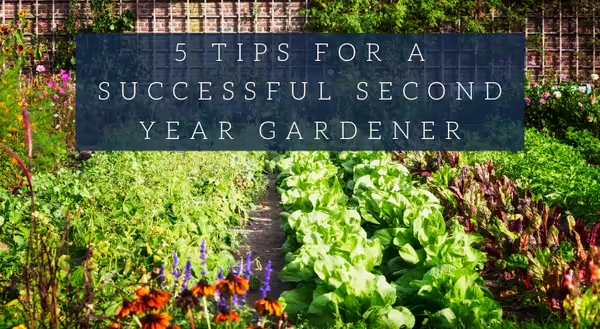
The year of 2020 brought a new experience for many as over 20 million novice gardeners picked up a trowel for the first time according to Bonnie Plants CEO Mike Sutterer. New adventures come with excitement; however, as those rose-colored glasses become clearer with further attempts and another year of gardening, the frustrations and failures can grow. Therefore, we have come up with some tips to help those 2nd time growers stay optimistic.
If you are a Good Growing subscriber, you have repetitively heard us explain the importance of soil sampling, and I will repeat it again here; we should be sampling our garden soil about every 3 years. If you have never sampled your soil before, do it now! Our soil sample tells us the soil pH, soil nutrient levels, soil organic matter, and more. This helps with making proper fertilizer applications, and soil pH can affect the availability of soil nutrients, so it is important that we are properly maintaining these which cannot be assessed without a soil sample. Unsure of how to collect a soil sample? Check out this video on soil sampling.
As a first-time grower, you probably didn’t notice much, if any disease or insect pressure on plants in your garden; however, any disease and insects that were there can overwinter in the soil or on plant residue making it easier for infection and feeding in the second year thus the importance of crop rotation. Each year we should rotate the crops in our garden to prevent carryover of diseases and insects. This is not a simple switching the placement of our tomatoes and peppers but going further by switching crop placement based on the crop family i.e. switching a Brassicaceae species (cabbage, cauliflower, radish, etc.) with a Solanaceae species (tomato, eggplant, pepper, etc.). Ideally, you shouldn’t plant vegetables from the same family in an area of the garden more than once every three to four years.
Scouting is also important for pest control. By frequently scouting, you can prevent weed, disease, and insect issues. A quick stroll through the garden looking for any new weeds that have popped up, insect feeding, or wilting leaves can help to cut down on your labor.
Weed control can be very time consuming and sometimes seem never ending, but there are methods to help reduce the amount of time you spend hoeing or pulling weeds. Mulches such as straw, shredded leaves, and grass clippings are great options to help suppress weeds. I like to lay down newspaper and cover it with straw or leaves for added protection against weeds. Whatever it is you decide to do, it is good to implement the practice early before the problem gets out of hand. Read Starting a Garden: Weed Management to find more tips on weed control.
Sometimes it feels like we are succeeding just by watering our garden, but by strategically watering our garden, we can prevent issues with diseases. The best time to water is in the morning so the plants can dry throughout the day. We should also water for a longer period allowing the water to infiltrate deeper into the soil. Shallow watering promotes shallow root development; shallow rooted plants do not fare well in dry environments. Ultimately, our garden needs one inch of water per week, for more information on garden irrigation, read here.
Last, but not least, gardening is supposed to be fun! So add something new this year. Try planting a new vegetable or add some flowers to your garden. I always enjoy learning something new, so you could try something like curing or preserving your vegetables for later use. Sharing with neighbors or donating to the local food pantry can also make your labor more worthwhile.
Good Growing Tip: If you ever feel stumped or discouraged, don’t hesitate to contact your local Extension office. We are always happy to help!
Want to get notified when new Good Growing posts are available? SIGN ME UP!